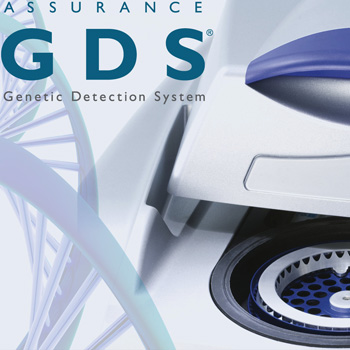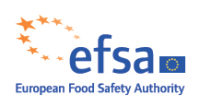The Move Toward Molecular Methods for Salmonella Detection

Rapid Salmonella detection technologies have continued to evolve in an effort to provide food producers and testing labs with the required improvements to specificity, sensitivity and speed. Many of these advancements utilize molecular-based detection technologies such as polymerase chain reaction (PCR) or other enzyme-mediated nucleic acid amplification techniques. Molecular detection technologies offer distinct advantages over the older antibody-based enzyme-linked immunosorbent assays, enzyme-linked fluorescent assays or lateral flow technologies. The latter generally requires longer, more complex enrichment schemes and are more prone to false-positive results caused by cross-reacting enterics, such as Citrobacter. The new molecular methods possess their own set of unique challenges.
The Challenges of Food Samples
Molecular methods typically provide superior sensitivity and specificity compared to antibody methods and normally have shortened enrichment procedures. Often times, the sample-to-media ratio is reduced below the traditional 1 part sample to 9 parts media (i.e., 25 g in 225 mL) as well. These modifications offer cost and labor reductions but result in an increased potential for the sample matrix to interfere with the detection technology. Food and environmental surface samples often contain sub-stances that can inhibit molecular detection in a variety of ways, including inactivation of the polymerase enzyme, degradation of the nucleic acids or interference with the optical signal. Examples of common inhibitors include phenolic compounds found in chocolate and berries, certain polysaccharides found in plants, calcium ions in milk, proteinase enzymes produced by microorganisms in the sample, enrichment media components such as bile salts and acriflavine, colored samples such as spices or produce, and antimicrobial chemicals used as interventions during processing.
Why Sample Preparation Is Critical
The goal of an enrichment procedure is to ensure that Salmonella, if present, is grown to a detectable level. Equally important is the sample preparation procedure used to prepare the enriched sample for analysis. This step must ensure that inhibitory substances are removed from the sample in a way that does not reduce the level of the target pathogen. Many molecular detection technologies rely on a dilution step in which a portion of the enriched sample is transferred to a buffer solution in preparation for a heat or chemical lysis step that functions to release the targeted nucleic acid material from the cells. However, this dilution approach counteracts the enrichment process, dilutes Salmonella and reduces the method’s sensitivity. In contrast, Assurance GDS® Salmonella from BioControl incorporates a proprietary immunomagnetic separation technology that utilizes antibody-coated magnetic particles to capture and concentrate any Salmonella in the enriched sample. These particles, with the captured Salmonella, are physically removed from the enrichment and transferred to the PCR tubes for analysis. This simple and effective process takes less than 20 minutes for 72 samples and helps ensure that the reaction proceeds uninhibited without compromising sensitivity.
Negative or False Negative?
Any molecular detection assay should contain an internal control (IC) in each reaction. Because molecular technologies are susceptible to interference or inhibition, it is crucial that a Salmonella detection method can verify that a negative test result is due to the absence of Salmonella and not a failed reaction. As each sample represents its own unique set of conditions, an assay control that is separate from the sample does not provide sufficient information to verify the negative result. Each Assurance GDS Salmonella Amplification Tube contains an IC that consists of a unique sequence of DNA with its own specific primers and probe. Amplification of this IC must occur to ensure that the PCR process has not been inhibited in each tube in order for the corresponding negative test result to be determined valid by the Assurance GDS Rotor-Gene® Software. Without the presence of an IC in each reaction, any negative test result could be the result of a failed reaction and could, in reality, be a false-negative result.
An Ideal Solution for Rapid Salmonella Detection
A rapid Salmonella detection method should also fit the lab’s workflow and produce results quickly and efficiently. The new 72 sample high-throughput option for Assurance GDS can provide results for 400 samples in a single 8-hour shift, more than twice the capacity of other molecular methods. Salmonella results are available in just 20 hours for most samples and as fast as 10 hours for certain matrices with a dual enrichment method for Salmonella and E. coli O157:H7.
For more information contact BioControl Systems at 800.245.0113 or visit biocontrolsys.com
Looking for a reprint of this article?
From high-res PDFs to custom plaques, order your copy today!








